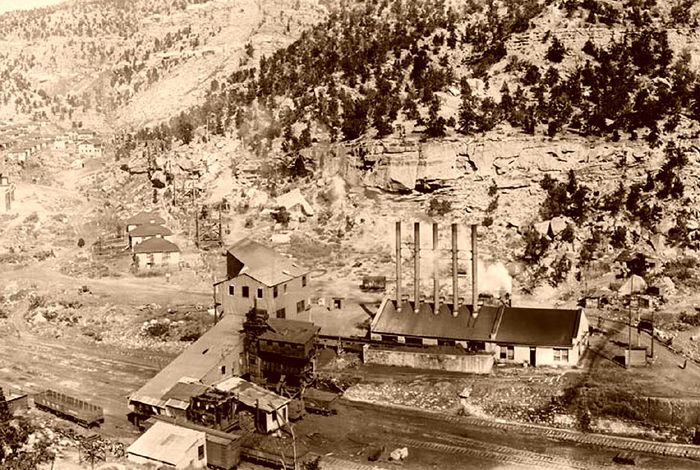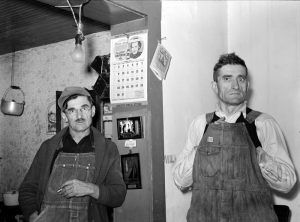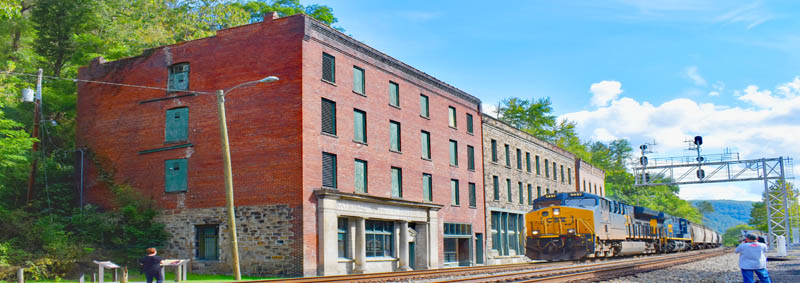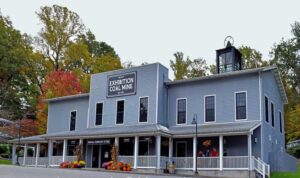
Spring Canyon Coal Company, William Shipler, 1925
by Jackie Edwards
Coal has been, for over a hundred years, the lifeblood of the American economy, a driver of growth, and part of the country’s rich cultural tradition. Unfortunately, the need for coal has declined significantly over the past fifty or so years, and that has created a series of towns and cities experiencing degeneration. The New York Times recently featured widespread flooding in Kentucky exacerbated by former coal pits; in Utah, coal pit fires are putting towns and villages at risk of extinction. Disasters in coal mining towns are nothing new, of course, but it’s their long-term impact that is now putting unexpected consequences onto the USA.
There is a way forward. Throughout the country, sustainable and exciting initiatives are underway to resculpt these old mining communities. Through this, the modern day is being brought to an iconic, if outdated, part of American culture.
Embracing new energy

Former Coal Miners put to work by the WPA in Zeigler, Illinois by Arthur Rothstein, 1939
The reason for coal extraction and its lasting impact is seen through energy generation. Coal fired the generators of industry, and then, in time, it fired the generators of electricity, the great enabler of the 21st century. From 1900 through 1931, a huge electrification charge managed to completely switch the way in which the nation lit and heated their homes, with 70% of homes electrified and most of those reliant on coal energy.
It is poetic that coal can potentially be turned into the foundation for the most up-to-date methods of energy generation. Through using sustainable building materials, such as modern concrete compounds (another material at the heart of American history and infrastructure, and one seeing a close focus on its innovation), and then pairing this with electric energy generation, such as hydro, solar and wind, coalfields can become a phoenix for energy generation. The Environmental Protection Agency highlights enterprising examples of this in Rio Grande County, Colorado, and at Questa, Minnesota.
Turning to history
Where energy generation is not possible, one of the most popular uses for former coal sites is for historical and nature reserve purposes. In West Virginia, one of the most important coal mining states, this has been the approach taken in many former coal sites. This is largely to the benefit of the state.
According to WOW KTV, a nature reserve has been created at the Kanawha State Forest; at Beckley Exhibition Coal Mine, a private mine has been turned into an important history site and museum. Hersnshaw Farms, most curiously, has moved towards agriculture. They have opened up an expanding mushroom farming site, using the conditions created by coal caverns to replicate the ideal circumstances in which mushrooms can grow en masse. Finally, the recently (2015) closed SEVA WV’s SunPark is being used in part for renewable energy but is also being developed into an area that will host housing, recreation, and leisure. This is of particular interest – how coal towns can be regenerated to provide the housing of the future.
Creating a new society
There are interesting case studies throughout America where coal mining villages and towns have been turned into cities of the future. The Ohio River Valley Institute, a research group that looks at regeneration in such communities, highlights the great successes of Centralia, Washington State. A former mining town, it has embarked on a regeneration process that can act as a template for other states.
Centralia has invested heavily in renewable energy. Following the negotiation of a $55 million coal transition fund with the federal authorities, it has created a fund that supports energy efficiency upgrades for low and moderate-income residents and an energy technology fund to help support energy generation. Employment rates have surged. GDP change has increased dramatically, too, and will continue to; and it’s all private, with government enterprise relatively low-impact.
A key reason that Centralia has been successful is because of the existing community in place. These coal communities, far from being ‘ghost towns,’ are simply places that are perhaps forgotten by the wider national community and are in need of some love and care. $55 million is a relatively low figure by national standards; that little bit of investment is seeing a return now, and a community with close ties reinvigorated.

A train comes through Thurmond, West Virginia by Kathy Alexander.
Inspiration from Germany
There is another lesson in coal regeneration that can be seen in foreign countries. The American Bar Association, in a review of how to make coal transitions fair in the wider community, highlights the positive transition of Germany’s Ruhr region. A classic area of natural wealth and industrialization, in the mid-60s it moved from being a highly industrialized and primary industry region into a largely service-oriented economy and an educational hotbed.
Crucial in these efforts has been the enfranchisement of workers in the transition. Creating sustainable and high-quality modern communities relies on more than just creating the businesses and buildings needed to support them. Instead, every worker needs a say in the change; communities must be consulted and involved. They were the lifeblood of the country then, and now, even as the wider economy insists they don’t have a key role to play in modern industry, they do have a say. They are the sustainable factor in any regeneration.
©Jackie Edwards, for Legends of America, August 2023.
About the Author – Jackie Edwards was a mining engineer before becoming a semi-retired freelance writer.
Also See:
Three of the Most Celebrated Gardens in American History
Thurmond, West Virginia – National Park Ghost Town

